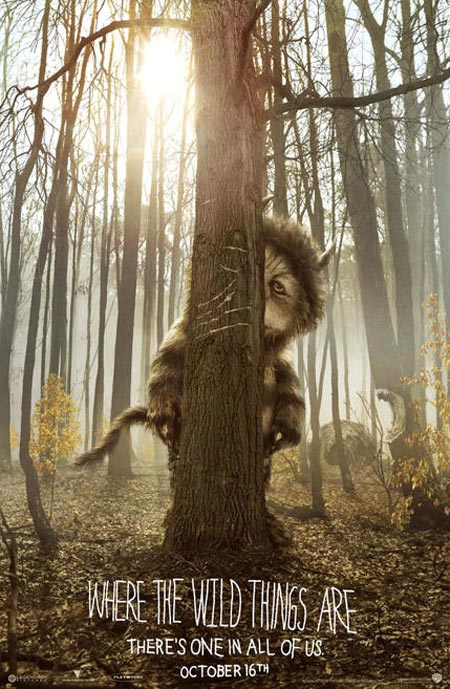Early on in Spike Jonze’s new adaptation of Where the Wild Things Are, Max’s mother asks him to tell her a story, and he responds with a brief sketch about a vampire who bites a building and loses all his teeth—when it turns out that they weren’t his baby teeth and won’t grow back, all his friends leave him behind, because he can’t be a vampire anymore. Young Max’s tone as storyteller is gravely matter-of-fact, but as he speaks we see the palpable impact of his words on his mother (played by the wonderful Catherine Keener) as her bemused grin gives way to a careworn expression of wistful concern.
This brief, bittersweet moment is emblematic of the film in several ways: thematically, the story encapsulates many of the uncontrollable elements which define Max’s world: change, abandonment, his own destructive impulses, regret. Poignant and richly detailed, this scene—and the movie as whole—serve as a reminder that children are not magically insulated against the harsher realities of life. Although it is often uncomfortable for adults to recognize (or remember) the fact, loneliness, isolation, and powerlessness are an inevitable part of childhood, and Where the Wild Things Are is a vibrant, sincere exploration of both the highs and lows, freedoms and limitations of children’s experience.
Jonze has repeatedly said that in adapting Maurice Sendak’s seminal book, his aim was to make a film “about childhood”; not a “children’s movie,” but one that both kids and adults could honestly relate to. Building upon Sendak’s classic ten-sentence story, he and collaborator Dave Eggers fill in some of Max’s backstory in the opening scenes rather elegantly and impressionistically, with very little dialogue: absent father, disinterested teenaged sister, loving but distracted mother. Ignored and frustrated, Max acts out, throwing a tantrum that ends with him running away into the night and eventually reaching the land of the Wild Things. At this point, the movie begins to run on its own speed, as the nameless creatures of the book become distinct personalities with a number of very real problems.
Shifting back and forth between giddily transcendent flights of joyful abandon and darker moments of sudden tension and fear, Max begins to realize that being responsible for other people’s happiness is a difficult job, and that no one has the power to shield everyone from loneliness or keep sadness at bay indefinitely, in spite of the best intentions. While the film stays true to the essential spirit of the original, the major difference between the two lies in the fact that Sendak’s self-contained narrative speaks directly to the experience of being a child, while Where the Wild Things Are is a movie about growing up. It may seem like a slight distinction, but it’s the difference between celebrating the power of fantasy and recognizing the limits of that power. The movie is certainly more complicated, bittersweet and at times genuinely upsetting, but no less beautiful in its own way.
Whether or not the film will work as well a children’s film as it does as a film about childhood remains to be seen—during the screening I attended, it seemed to go over well with most of the kids in the audience, although the hot dog-wielding three-year-old next to me seemed to lose interest whenever the action slowed down. Admittedly, given the extreme dysfunction of the Wild Things, there are scenes which come off a bit like group therapy sessions, with all the shrillness and discomfort that implies; it occurs to me that those might be more disturbing to some children (and adults) then the threat of violence or of being eaten. For all of its intensity and darker elements, however, Where the Wild Things Are ultimately manages to be cathartic and comforting without being disingenuous or opting for cheap escapism or sentimentality; for people who truly love the book, at any age, this should stand as the film’s most vital and enduring accomplishment.
Bridget McGovern is a lit nerd, a film geek, and a complete pop culture junkie. She enjoys muppets, David Bowie, roller coasters, and Zardoz more than anyone probably should.










